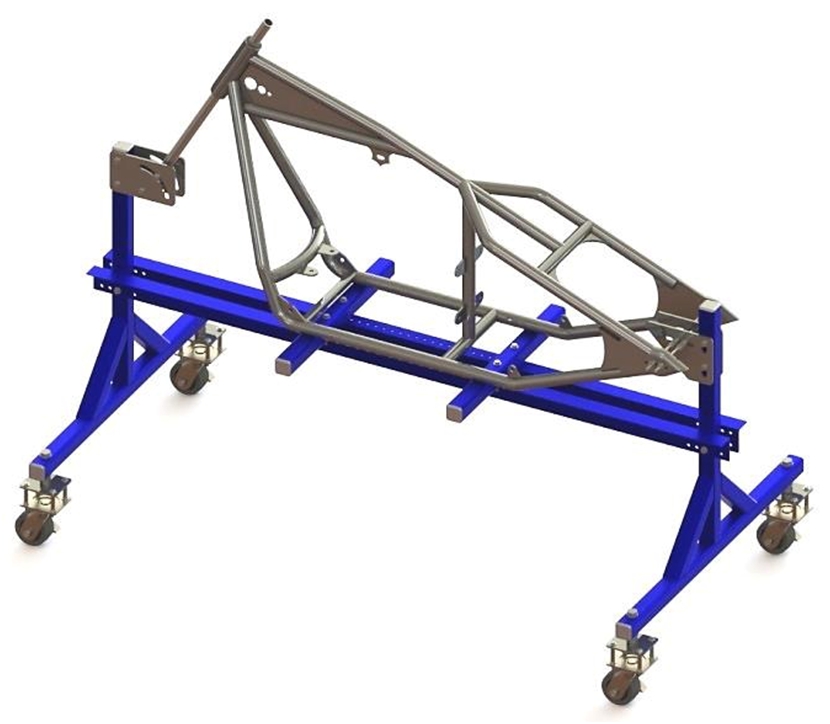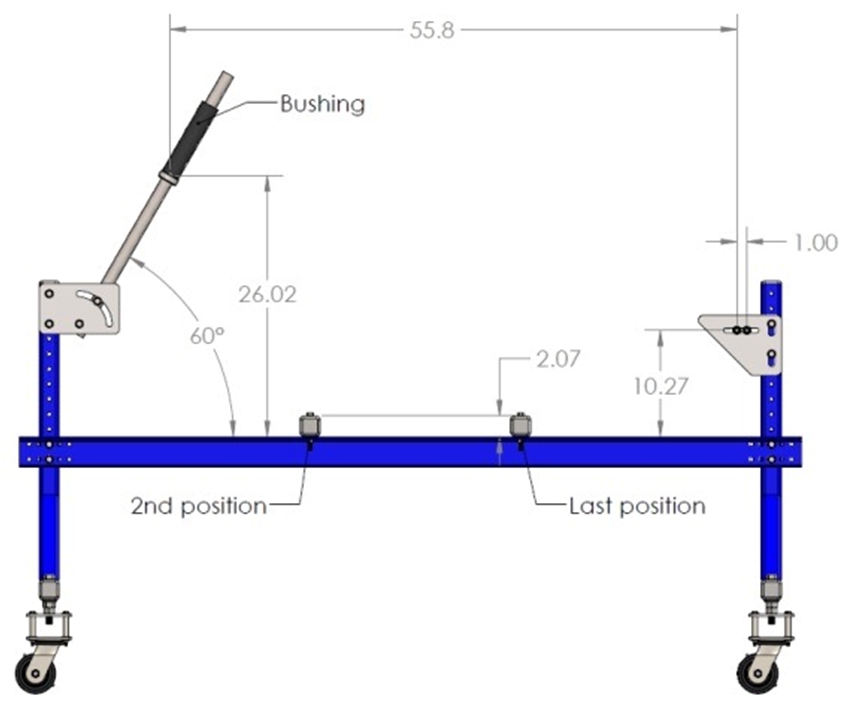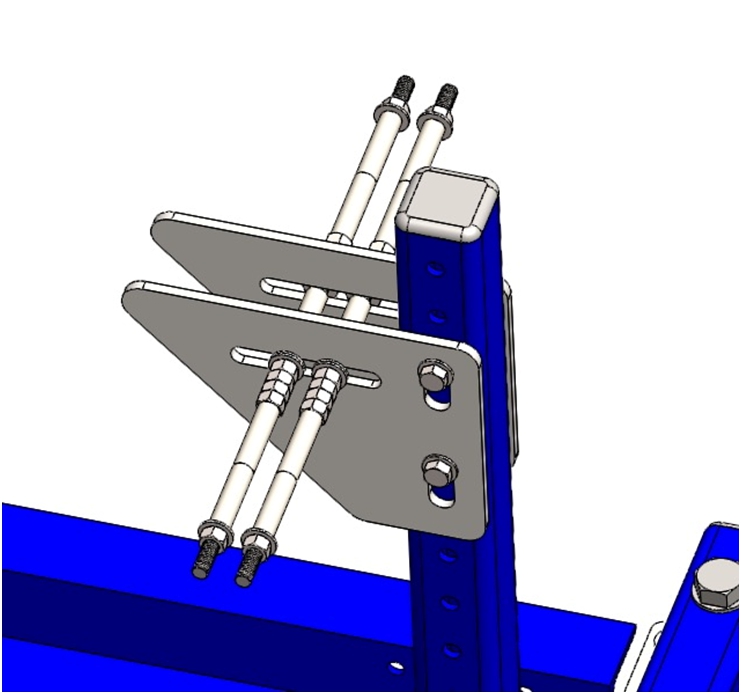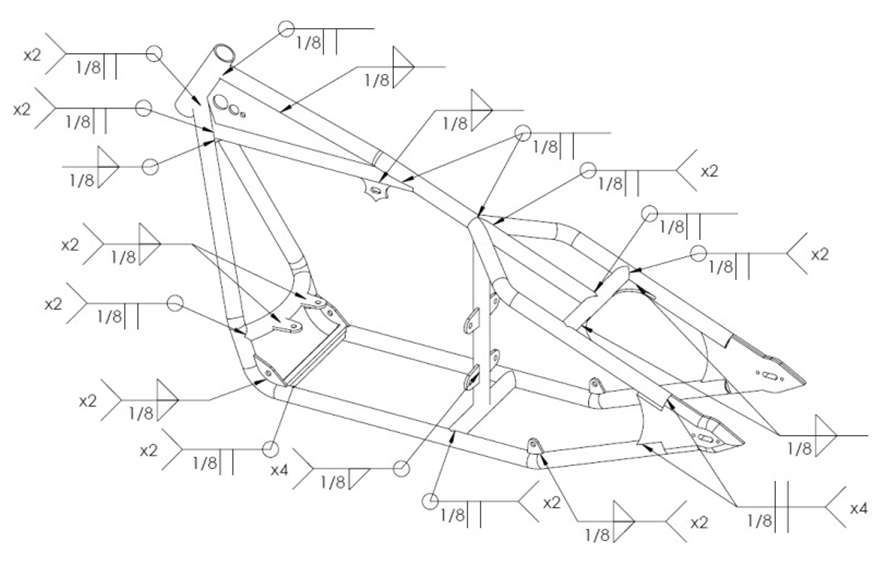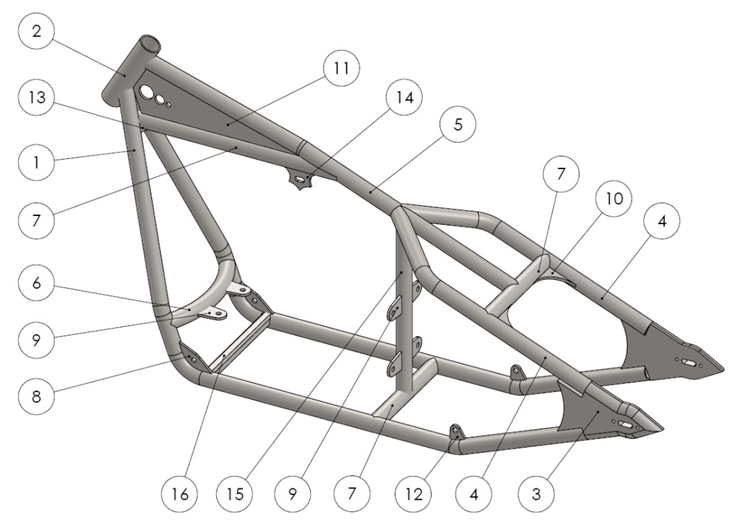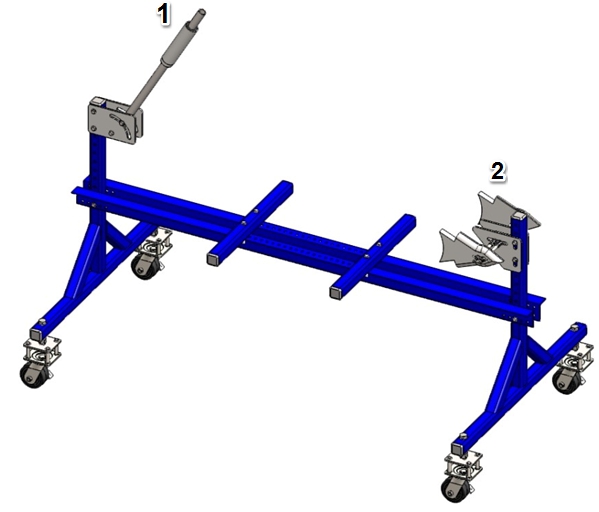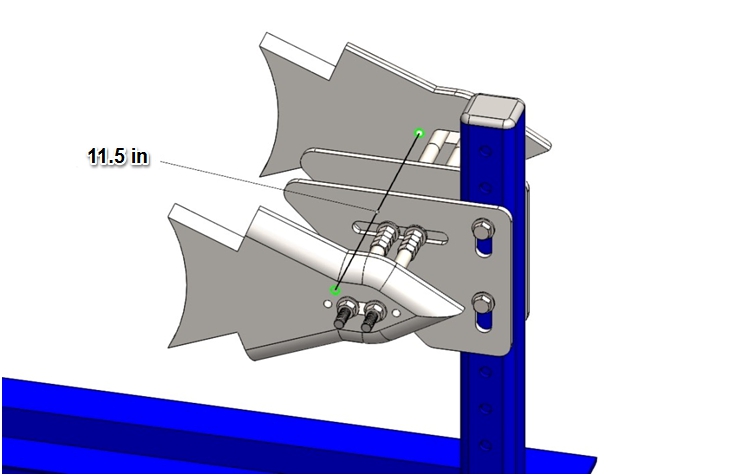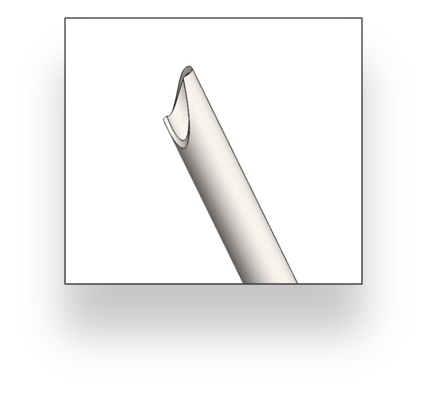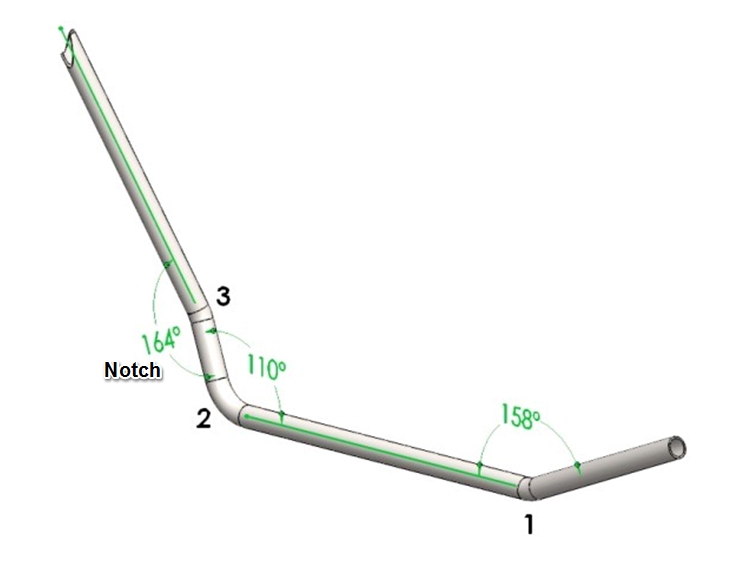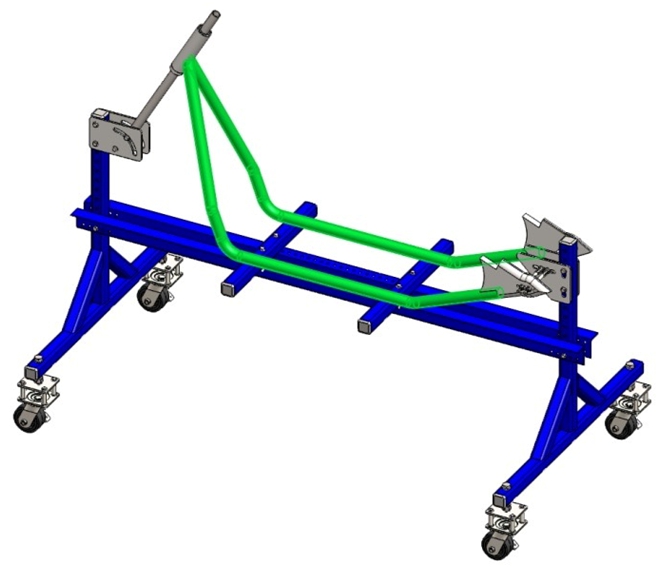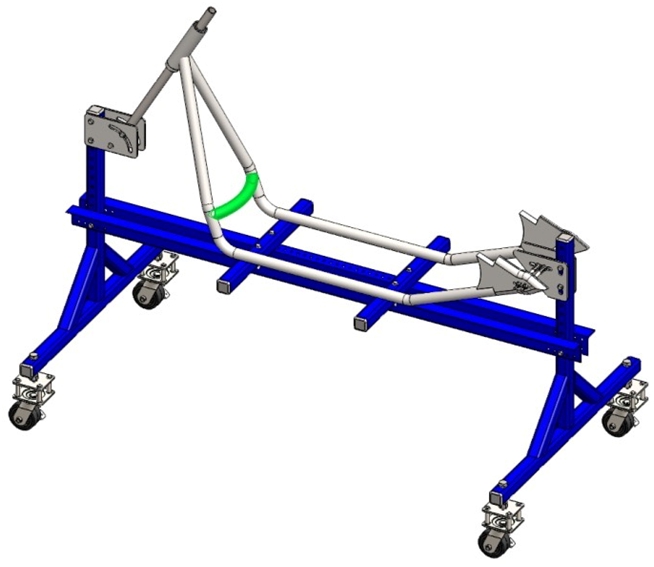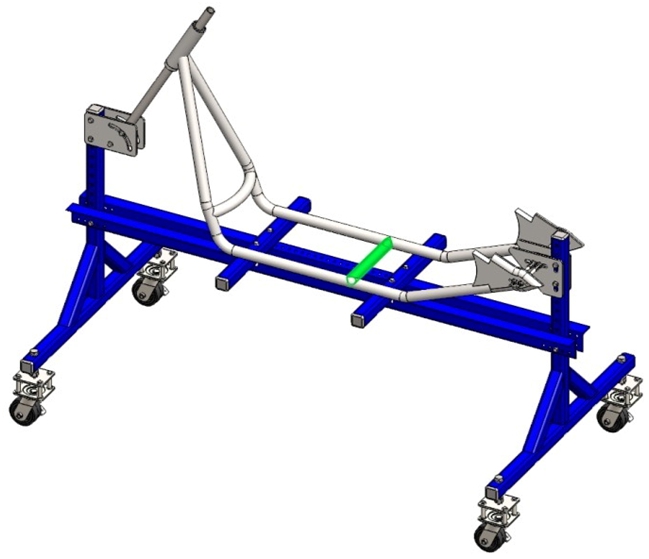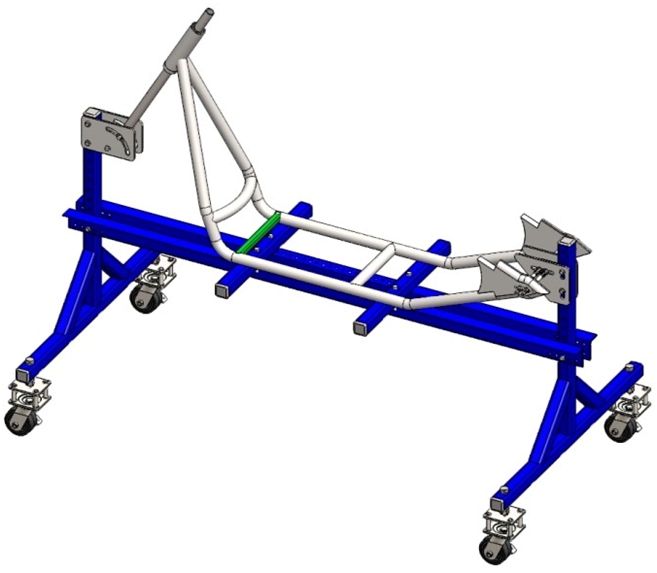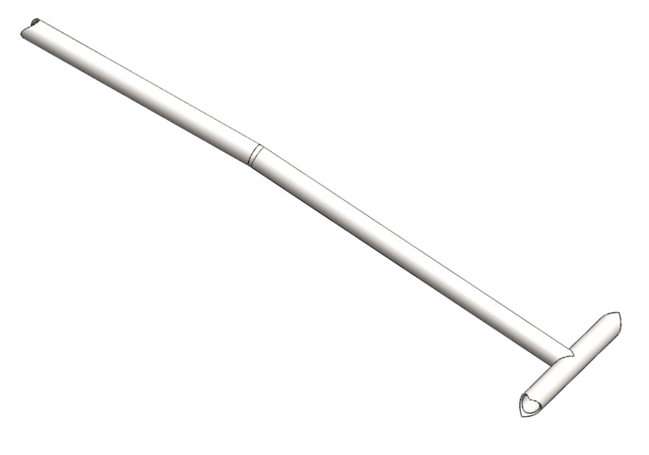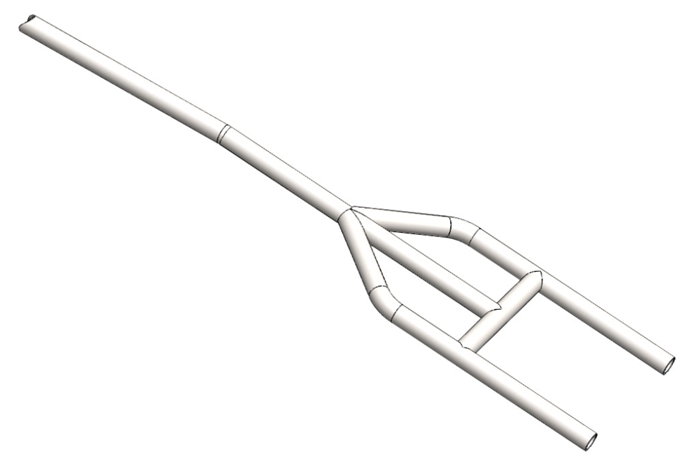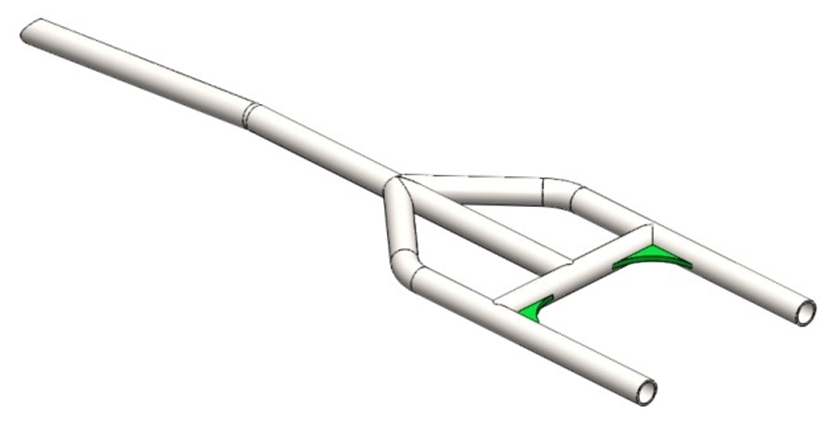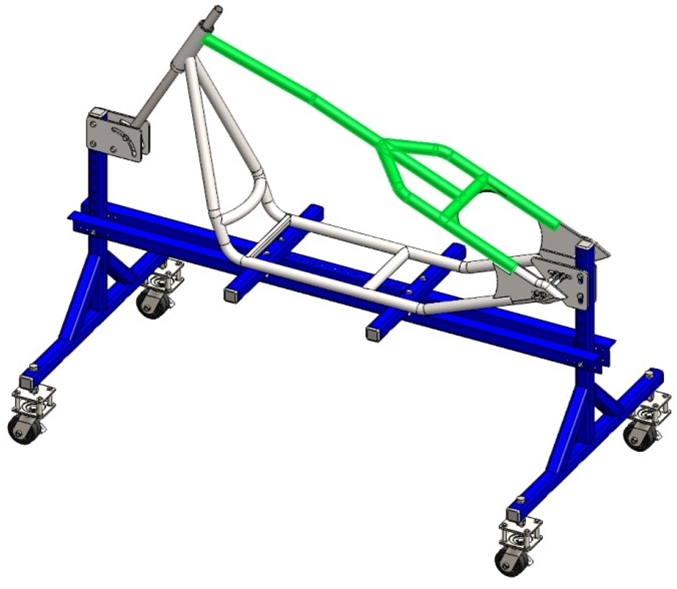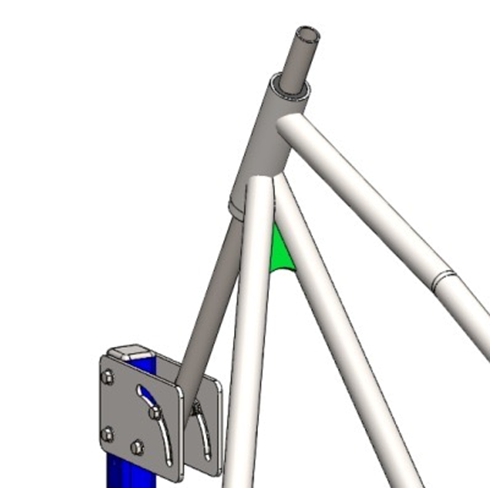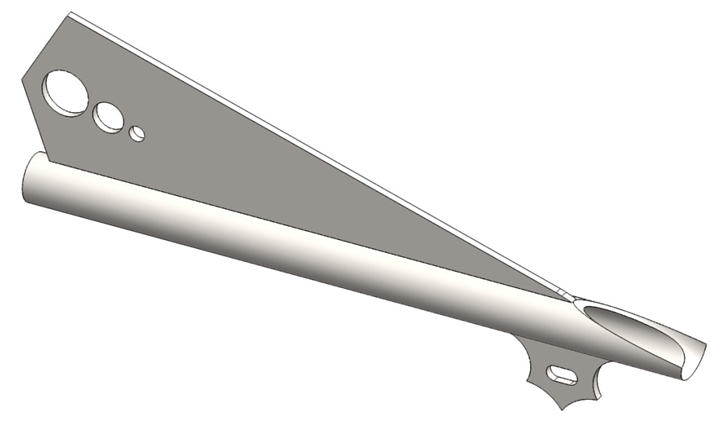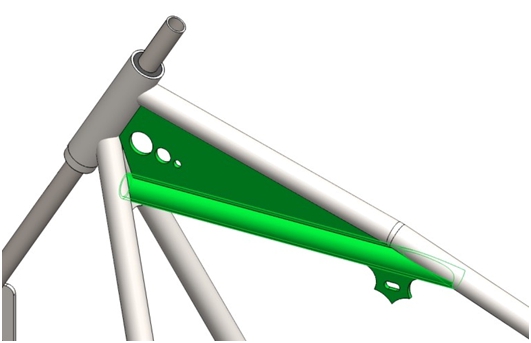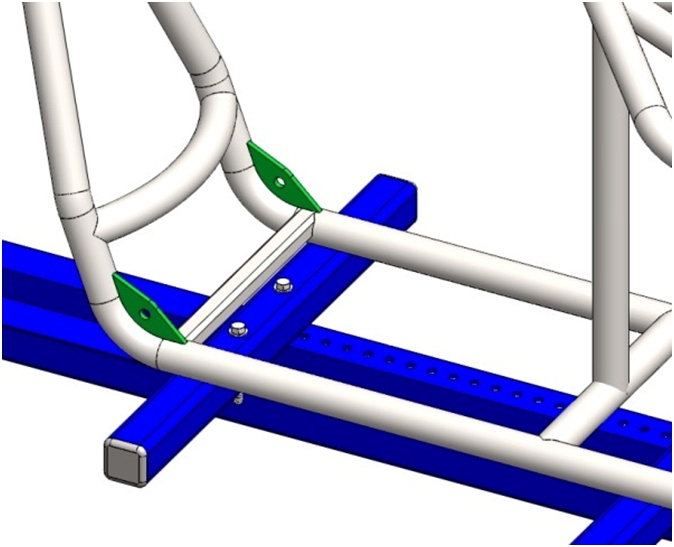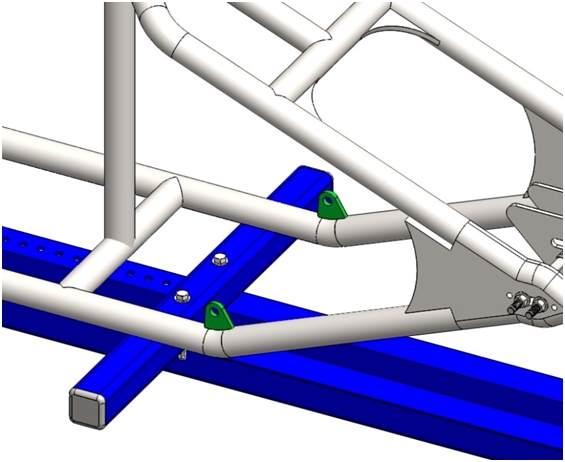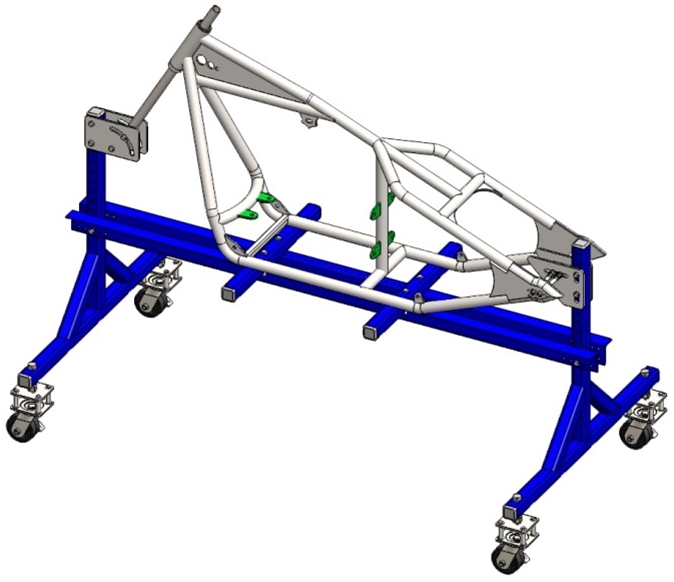Rigid Sportster Frame Assembly Guide!
Before you can build this frame you'll need the sportster plans (rigid). I also recommend you get the jig plans as well (there's an assembly guide for it as well).
Lets begin this build!
Machinery and Tools Required:
- Frame jig (recommended).
- Chop saw or Angle grinder.
- Tubing bender.
- Tube notcher and tube notching accessories.
- MIG, TIG or Arc Welding.
- Plasma Cutter (recommended).
- Fitter's vise.
- Hammer, wrench set, tape measure, clipper.
- Drill press.
- Drill set.
Materials Required:
- 1.25’’ ERW tubing (32 ft).
- Mild steel sheet – 1’’ thickness (150 in2).
- Mild steel sheet – 0.25’’ thickness (152 in2).
- 2’’ round bar (8 in).
- (1) Steering head 8’’ tall.
- 1’’ x 1’’ block (13 in).
1. Preparing The Jig.
Step 1: Position the basic elements of the frame jig in proper position as shown on figure 1.1. Move the elements in the specified position and tighten the bolts.
Step 2: Using the vertical slots of the rear axle mount plate perform the 10.27" dimension. Moving the threaded rod in horizontal slot perform the 55.8" dimension and then position the second rod 1" to the right. Tighten with nuts to ensure the position of the rods.
Step 3: Position the steering head shaft 60º measured from the longitudinal beam, so the steering head of the frame have to be with 30º rake (see drawing).
Step 4: Machine bushing depending on dimensions of the used steering head. Position locking sleeve observing the dimensions on Fig 1.1. and lock it using the retaining splint. Thread the bushing as shown on the picture.
2. Assembling The Sportster Frame.
Parts:
- Down rails.
- Steering head.
- Axle plates.
- Left and right wishbone.
- Backbone.
- Curved brace bar.
- Straight cross bar.
- Front engine mount gusset.
- Eyelet mount gusset.
- Wishbone gusset.
- Steering head gusset.
- Transmission mount.
- Steering downrail gusset.
- Top center engine mount.
- Center support.
- Large front engine mount.
Step 1: Thread the steering head through the already mounted to the frame jig bushing.
Mount the axle plates in their place on the frame jig. Use two threaded rods to ensure the horizontal position of the slots. You can use the two small holes to ensure the 11.5" size and fix the plates not movable.
Before proceeding to welding the frame check the major (and most important) dimensions shown on Fig. 1.1.
Step 2: Cut 70" long piece of 1.25" ERW tubing. Start bending the first 158º bend observing the dimensions on the drawing. Execute the second 110º and the third 164º bend. Check the final dimensions. Notch the end using a tube notcher. Repeat the steps for the second piece.
Step 3: Take one piece of already bended down rail and align it as shown on the next picture. Tack weld in place. Proceed to second piece. Check dimensions and if there is no gaps complete the welds according to the welding plan (Fig. 2.1).
Step 4: Cut 13" long piece of 1.25" tubing. Bend the R12" radius observing the drawing. Notch the ends until you get the proper length. Tack weld between the down rails. Check alignment and complete the welds according to the welding plan (Fig. 2.1).
Step 5: Cut 12" long piece of 1.25" tubing. Notch the ends using a tube notcher. Tack weld the cross bar between the down rails. Check alignment and complete the welds observing to the welding plan (Fig. 2.1).
Step 6: Cut 13" long piece of 1"x1" block. Machine the chamfers and the radiuses. Weld the machined bar between the down rails observing to the welding plan (Fig. 2.1).
Step 7: Cut 41" long piece of 1.25" tubing. Bend according to dimensions on the drawing. Notch the ends so they have to fit to the radius of the tubing and 90º each other rotated.
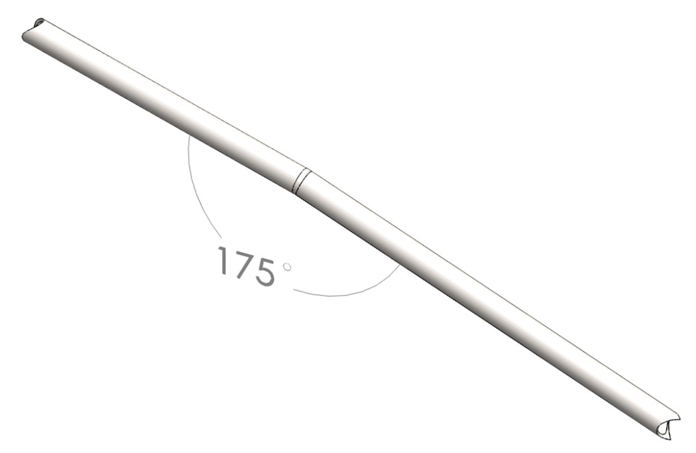
Step 8: Cut 12" long piece of 1.25" tubing. Notch the end using a tube notcher. Weld the backbone and cross bar together. The notches of the cross bar have to be parallel to backbone.
Step 9: Cut two 30" long pieces of 1.25" tubing. Execute the R3.0" bends observing the dimensions on the drawing. Notch the ends as shown on the next picture.
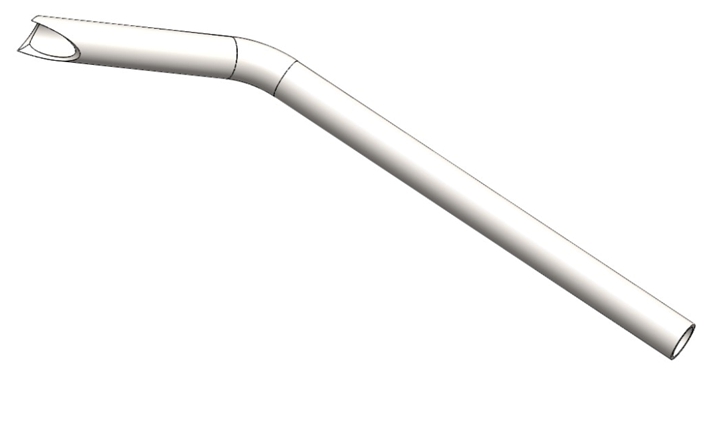
Position the two pieces and the assembly from Step 8 on a flat work surface. Tack weld them in place. Check alignment and dimensions and if there is no gaps complete the welds according to the welding plans (Fig. 2.1).
Step 10: Cut two 3x3" pieces of 0.25" thick mild steel sheet. Machine according to the drawing. Position them as shown on the next picture and complete the welds observing the welding plan (Fig. 2.1).
Step 11: Position the already made assembly as shown on the picture. Use welding fixtures if available for right positioning or hold the piece with one hand and tack weld with the other hand. Check alignment and if it meets the drawing dimensions complete the welds.
Step 12: Cut 19" or little longer piece of 1.25" tubing. Notch the ends with angles matching the angles between the tubing (see main drawing). Tack weld the notched tube between the backbone and the lower cross bar. Complete the welds according to the welding plan (Fig. 2.1).
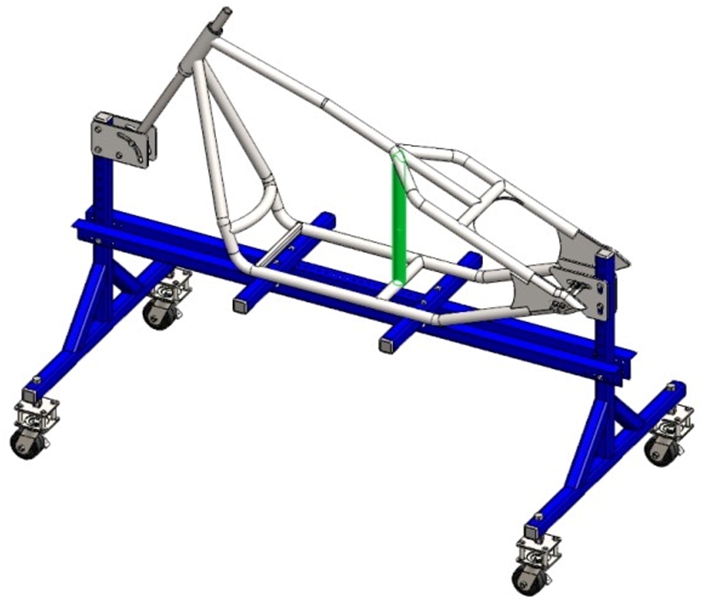
Step 13: Cut 3.5x2.5" piece of 0.25" thick mild steel sheet. Shape observing the dimensions on the drawing. Weld between the down rails.
Step 14: Cut 5.5x20" piece of 0.25" thick mild steel sheet. Shape the overall dimensions using an angle grinder and drill the holes (the holes on the plate are for aesthetics). Cut 2.5x4.5" piece 0.25" thick mild steel sheet. Shape the overall dimensions and mill the slot.
NOTE: It's recommended to use a plasma cutter for one step machining the parts.
Cut 22" piece of 1.25" tubing. Notch the ends as shown on the next picture and proceed to welding the pieces according to the welding plan.
Step 15: Proceed to welding the assembly from Step 14 to the frame. See welding plan.
Step 16: Cut two 1.5x4.5" pieces of 0.25" thick mild steel sheet. Machine the overall dimensions using an angle grinder or plasma cutter. Drill the holes. Position the gussets on the frame using welding fixtures and complete the welds according to the welding plan (Fig. 2.1).
Step 17: Cut two 1.5x1.5" pieces of 0.25" thick mild steel sheet. Shape the overall dimensions using an angle grinder and drill the holes. Position them on the frame using welding fixtures or use the holes for orientation. Complete the welds according to the welding plan (Fig 2.1).
Step 18: Cut six 2.5x2.5" pieces of 0.25" thick mild steel sheet. Shape the overall dimensions using an angle grinder or plasma cutter and drill the holes. Start tack welding the pieces to the frame. (NOTE: The position of the gussets depends on the engine additive dimensions). Check alignment and complete the welds according to the welding plan (Fig. 2.1).
When all the steps are completed the welds must be finely filed to overflow with the tubes. Then proceed to custom painting the frame.
Good Job!
You finished assembling the Rigid Sportster Frame!
